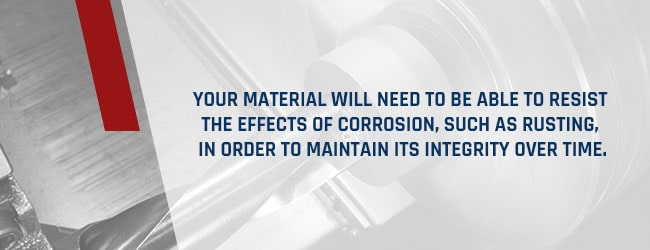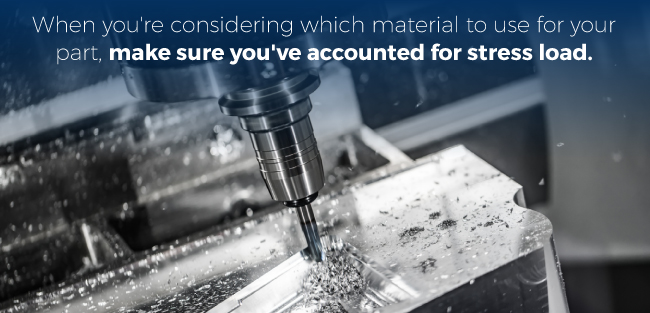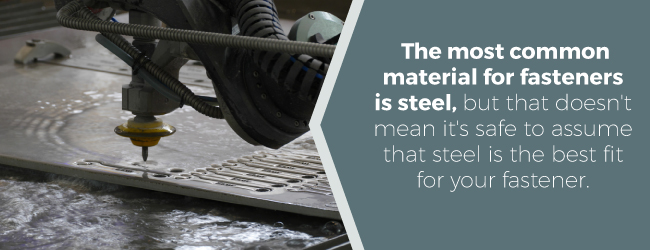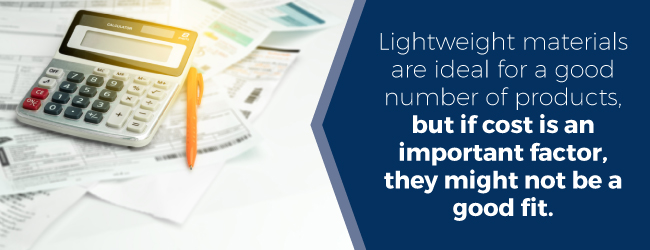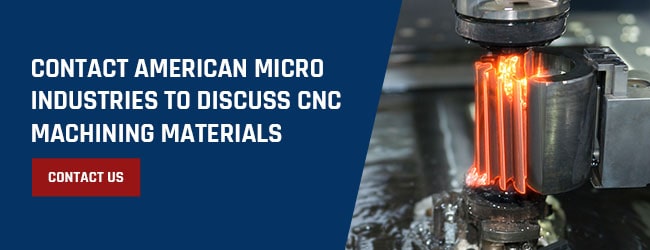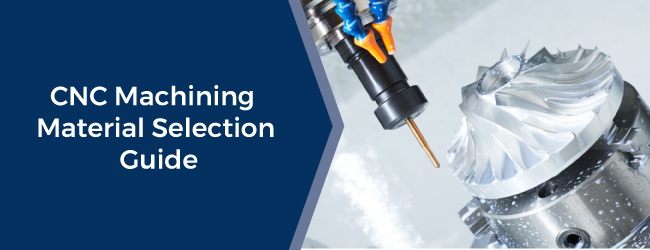
Have a project with a great design? You’re off to a strong start, with the specs and prototype already finished. Now you are ready to start crafting your product. If you’re interested in using a CNC machine to manufacture the new part, you won’t be disappointed with your results, especially if you choose the proper material.
CNC machining has become a staple for a wide array of disciplines that need specialized parts manufactured for their projects. CNC materials have expanded to meet the demands of consumers, engineers, contractors and other fields to create solutions for very specific applications. Having a variety of materials to choose from is a luxury, but it can also be overwhelming and confusing if you don’t analyze what your needs are and ask yourself some questions before making a decision.
If you want your project to run efficiently and produce products that fit perfectly, this guide can help you during your decision-making process.
This guide will walk you through the following steps so you can choose an ideal CNC material for your project:
- Defining how the product you’ll make will be used so you can base your material decisions on end-result functionality
- Analyzing whether your product will be used indoors, away from harsh weather, or outdoors, where it may need corrosion-resistant properties
- Determining the material’s necessary stress load and dimensional tolerance so you can create a reliable product based on its projected use
- Considering whether your part will need compatible fasteners or have wear resistance properties so it can be a fastener itself
- Knowing the product’s ideal operating temperatures so you can choose a material that can withstand necessary temperature changes
- Gauging your product’s weight and stress capacity to choose the material that will let your part function properly
- Calculating your project costs to ensure you get a good deal for the material you choose
Essential Questions for Selecting the Right CNC Material
Choosing the right materials for your part is the difference between mediocre outcomes and optimum results. These important questions are the best place to start. The more you can narrow down the CNC materials that would be the best fit for your part, the easier it will be to select a material that will suit your needs and be cost-efficient.. Here are some things you should consider.
Learn About Our CNC Machining Services
How Will the Part Be Used?
Since CNC machining has expanded over the years, so have CNC machine components. Similar types of materials can be used for a variety of products and result in varying capabilities. Insulation is a great example. The materials used to insulate a Breathalyzer may differ from the materials that provide insulation in a camera. They’re both used for the same purpose, but not in the same way or for the same type of outcome. On the other end of the spectrum, materials for soundproofing walls have different specifications and uses.Start your material search by considering your product’s results.
Will the Part Be Used Outdoors or Indoors?
Outdoor and indoor environments are very different —one completely depends on the weather, whereas the other is usually a much more controlled environment. For instance, in outdoor environments, you need to plan for moisture. Your material will need to be able to resist the effects of corrosion, such as rusting, in order to maintain its integrity over time. Rigid foam provides a great example of a material that resists moisture and rusting while also maintaining structural integrity.
Extreme temperatures, both high and low, will also eliminate certain materials as the best option. You may also need to meet code for FDA-regulated specifications.Where your products will be used or stored and how they react to moisture and extreme temperature change becomes a cornerstone in deciding which materialto go through with.
What Is the Material’s Stress Load?
High-stressloads can cause certain materials to strain or even break. When you’re considering which material to use for your part, make sure you’ve accounted for stress load. If your part will be exposed to high stress, the material it’s made of will need the ability to resist loads and prevent deformation.
What Is the Material’s Dimensional Tolerance?
When you’re considering CNC-machined components, pay closeattention to dimensional tolerance. In addition to impacting the success of your manufacturing process, dimensional tolerance alsoaffects your bottom line, the parts and tools you choose and their assemblies and cutting methods.
You need to know the tolerance required for your part. If you’re working from an old part design or sketch, it’s a good idea tomake sure the tolerance is appropriate.Typos can easily occur in documentation. Even if the information is correct, if you can make an adjustment to loosen the tolerance and still allow the part to work to its full potential, you could save money by re-evaluating tolerance. Tighter tolerances are often more expensive to produce.
Some machining tools use a standard dimensional tolerance as a default, but if you don’t specify a tolerance, or discover that your numbers are off, you’ll end up ordering a part that may not fit or work at all.While you can fix this, it will take more time out of your project to have the part resized or reordered, and will end up costing you more than if you had determined the correct tolerance upfront. This simple initial step can help you save money in the long run.
If you aren’t sure what the exact tolerance is for the part you need,instead of risking a guess,let a CNC machining company like China Custom Component help you figure it out.
What Is the Required Fastening?
If the CNC-machined components you need are going to be used as fasteners, consider that as you choose a material. Materials influence how securely fasteners will fit together. Different materials have different properties — for example,strength, corrosion resistance, brittleness and galvanic corrosion — so you should choose a material that reflects the properties you want your fasteners to have.Themost common material for fasteners is steel, butyou can also create quality fasteners from other materials.
If you’re searching for a new part to fasten, it needs to fit perfectly. If you fail to consider the type of fasteningyou’ll needwhen you’re deciding on a material, your mechanism may not function properly.
What Are the Operating Temperatures?
Consider the operating temperature the part will need to withstand when it’s in place as a part of yourmanufacturingprocess. You want to be sure the melting point of the material you choose is lower than that of the operating temperature. You also want toensure the material can handle operating temperature change.While some of the more durable materials are built to withstand these changes, many will show signs of warping, expansion orbreakdownover time. Extreme temperatures can also negatively impact the durability of some materials.
Operating temperatureis equally as important to know when you’re CNC machining materials, so you can be sure the temperatures that result from the cutting and shaping of the part will not distort it. Makingtheconnection between the operating temperature and the material you’re using is essential to a successful design and production run.
High Temperatures and Their Impact on Materials
High temperatures play a crucial role when selecting what materials to use, as manymaterialswill deteriorate under extreme heat. A popular plastic thatloses strength underhigh temperatures is polyvinyl chloride, or PVC. While it has a good fire resistance rating, its working temperature is about 176° F. Stability tends to be lost around 280° F, making it unfit for some projects.
Some materials are resilientand durable under these high-heat conditions. For example, polyisocyanurate has properties that do not allow it to melt or freeze. The thermoset plastic is processed as a viscous material first, allowing it to form multiple shapes. After curing, it becomes rigid and exceptionally stable. When you’re wondering what materialsyou can use ina CNC machine to create the part you need, make sure you consider how the material handles high temperatures.
What Are the Weight and Stress Capacity?
Depending on what you want to do with your CNC–machined components, you should consider the weight of your materials. Bigger isn’t always better, and less doesn’t always mean more — especially when it comes down to cost.
Heavy materials absorb a great deal of stress. For projects that require excessive weight–bearing capabilities and resistance to high-stress loads,you may considerheavy materials.If you work on weight-sensitive projects, however,you might want to avoid heavy materials.
Lightweight materials are popular for weight-sensitive projects. While they are not as hefty as heavy materials, they still are durable and able to absorb a substantial amount of stress. Unfortunately, they are not very cost-effective, as they usually won’t include everymaterial featuredesired for your project. Lightweight materials are ideal for a number of products, but if cost is an important factor, they might not be a good fit.
Choosing between heavy and lightweight materials is just onereason whyit’s important to prioritizethe most important characteristicsfor your CNC-machined part. That way, you can specify what elements are crucial for your part in order for it function properly, eliminate materials that don’t meet those standards and then compare costs.
Strength doesn’t necessarily mean how much weight an object can withstand. There are more components that may need to be examined, such as:
- Tensile strength:An object’s resistance to breaking under tension.
- Endurance strength:An object’s overallstress absorptioncapacity.
- Wear resistance:An object’sability tohandle friction orbeself-lubricating.A good example of this is Ultra High Molecular Weight Polyethylene, or UHMW. It’s a similar product to Teflon, but it is more abrasion-resistant.
- Hardness:An object’s ability towithstand pinpoint surface loads.Hardnessis usually indicated with a Brinell or Rockwell hardness number.
What Are the Overall Project Costs?
The most expensive materials are usually high-strength, lightweight materials. The best methodforchoosing a cost-effective component is selecting one that meets your strength profile, temperatures restrictions and fitment requirements. The more crucial requirements or restrictions you have for your materials, the easier it will be to focus onthosekey elements.
Finding an industry that providesfree quotes and no minimumfor your materials will help cut costs right off the bat. Once you narrowyour details, you candecide ona more cost-efficient material that meets most of your needs.
What Materials Can Be Used in a CNC Machine?
A better question might actually be what materials can’t be used. CNC machines cut through nearly any material you can think of. Whileyou can useawide rangeof materials ina CNC machine, the most commonly employed materials used are:
- Metals:Suchas aluminum, brass or steel
- Plastics:Such asAcetal (POM), Acrylics (PMMA), Polycarbonate (PC) and Polypropylene (PP)
- Wood:Such ashardwood, plywoodorsoftwood
- Foam:Such as carving foam and rigid foam, whichtend to be more lightweight yet durable.
What Type of Material Should You Try?
What Type of Material Should You Try?
Once you’ve considered all of the factors listed above, chances are you’ll be able to determine which material is the best fit for your part. It may take some level of tweaking and experimenting to find the exact choice. Here’s an overview of four popular materials used in CNC-machined components:
- Rigid foam:By methods of conduction,rigid foamserves as the foam with the highest insulation value. It can perform in temperatures as low as -100° F and as high as 200° F.Rigid foamalso holds a higher R-value, which makes it a premium choice for floors, walls and other structure-based products that need to withstand moisture.
- Carving foam:Carving foamcan take on nearly any shape. It’s usually used as a model for molds because of its flexibility, but it’s also used in components such as gaskets and seals. Carving foam contains polyisocyanurate, which is dense and resistant to extreme temperatures.
- Phenolics:If you need to meet military-grade specifications such as MIL-I-24768,phenolicscan meet this requirement. There are several to choose from, such as CE, LE, G10, G10/FR4, G9, G11 and G7.Each has its own set of strengths. For example, the fine weave of phenolic linen yields good mechanical properties, dimensional stability and a better finish for machined components than CE material. However,phenolic linen isnot suggested for electrical primary insulation. LE phenolics meet Mil-I-24768/13 FBE requirements, while CEphenolics meetMil-I-24768/14 FBG requirements.
- Plastics:Plasticscome in many types,and a majority are used for bushings, bearings or electrical insulation. That said, a market exists for the more popular types of plastics.Plastic’s range of uses isbroad and benefits many industries, such as aerospace, automotive, medical and electronics.
General Tips on CNC Machining Certain Materials
The decision of which of the CNC machining materials to use for your partultimately depends on what you’re looking to create, but here are some general tips to use as a brief CNC materials guide:
- Consider non-metallic materials:Don’t assume metals are your best option. Non-metallic materials have become popular because they are lightweight yet durable — like foam you can mold into various shapes. Non-metals also retain small details during cutting. If your project seems like one that may benefit from the use of non-metals, plenty of options can benefit your final product.
- Know the difference between foams:Remember that rigid foam and carving foam serve different purposes. While both are lightweight, yet durable, rigid foam is best for parts with a focus on structural integrity and stability, while carving foam is often used as insulation andprototypes for molds.
- Consider phenolics:Phenolics are great options, especially when you need to adhere to specific regulations or specifications for military-related projects.
- Learn about different plastics:You can choose froma wide variety of diverse plastics. Acetal is often used for bushing and bearing replacements. Polyvinylidene fluoride polymer, or PVDF, is used in insulation for electrical wiring. You can employ UHMW in medical biomaterial, such as knee, hip and spine replacement devices. These are just a few examples of the endless possibilities offered by plastics.
Contact China Custom Component to Discuss CNC Machining Materials
Ask yourself what type of company you want to work with to machine your materials. Look for turn-key industries with strong attention to detail and ability to create hard-to-find parts. Do your research and select your company based on values, quality and efficiency as well. China Custom Component offers the solutions you need in a timely and affordable fashion.
This guide should provide some insight and guidance to your decision-making process.Get in touch with usto discuss any additional concerns about materials or the machining process to clear up any lingering questions you may have. When you are ready to begin, we are ready to assist you.



